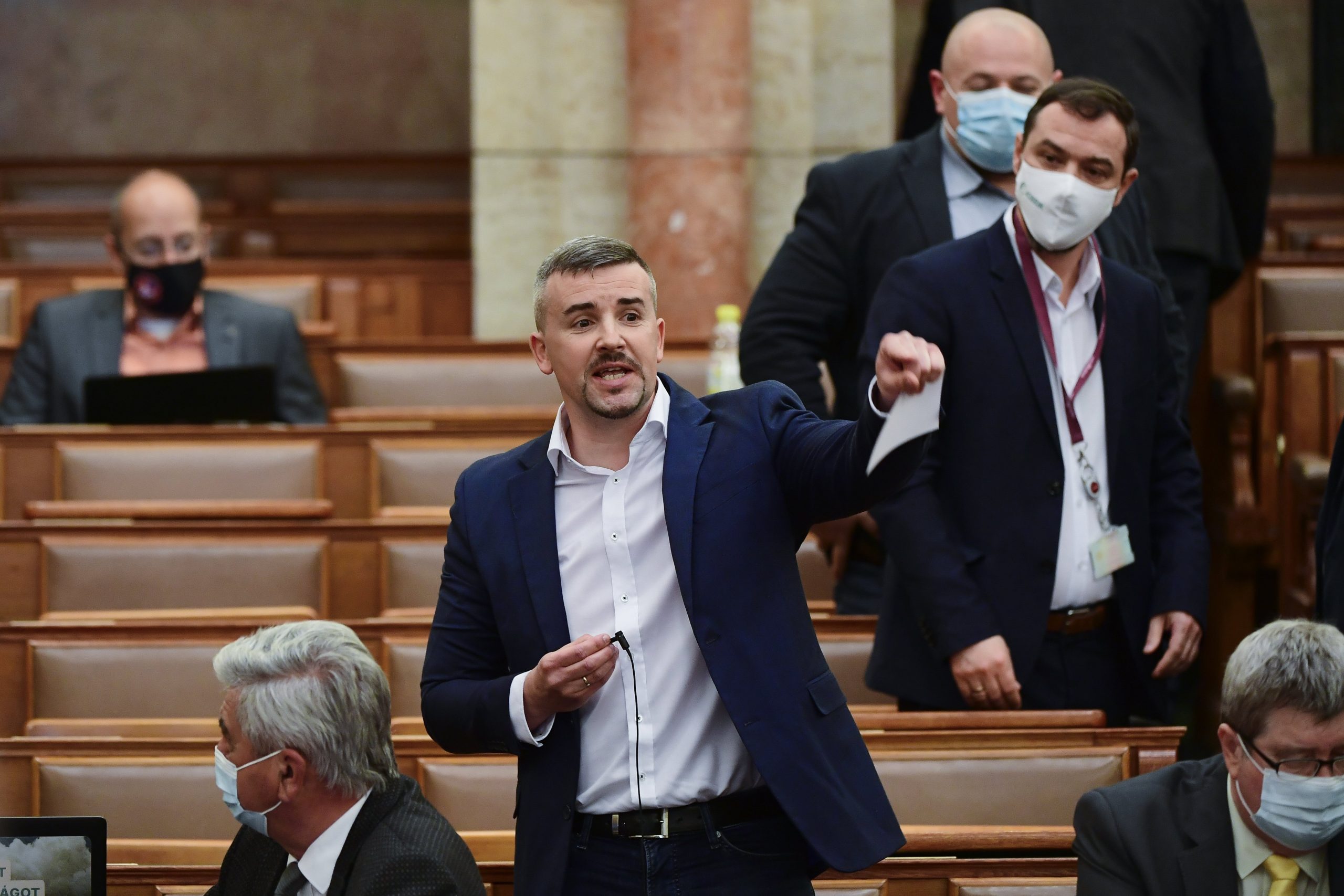
"For the past six months we had been washing the prime minister-candidate's dirty laundry enough,” the president of Jobbik said.Continue reading

Although the opposition’s defeat was predicted, such a huge fiasco was not foreseen. Fidesz was able to improve almost everywhere, while voters backed out from behind the opposition alliance in huge numbers. The opposition alliance’s shocking defeat may be attributed to several factors: Fidesz’s dominance in media, the war and Fidesz’s negative campaign built on it, the changed preferences of Jobbik’s voters, and disagreements within the opposition. Here are some of the facts and potential reasons.
Even though there were 300,000 fewer (partly due to population decline) voters at the ballot boxes this year than four years ago, 100,000 more cast their ballots for the ruling alliance than in 2018.
And while in 2018 only three districts were won by the opposition outside Budapest, this time around they calculated at least 25-26 victories outside the capital, but only won in two (one is still wavering, while the opposition candidate could still win in a 3rd one).
This catastrophic performance has also been confirmed by a graph, recently published by political analyst Gábor Török, pointing out that never has the opposition had so few voters in the 21st century.
As a result, while in 2014 and 2018 Fidesz won a qualified majority despite more votes cast for the opposition parties (thanks in part to the electoral system, controversially changed by Fidesz), this was not the case this time. The governing alliance has gained some one million votes more than the opposition alliance.
As we mentioned before, many analysts began to speculate that in fact (formerly far-right, now center-right) Jobbik’s (former) voters tipped the scales in favor of Fidesz and far-right Mi Hazánk.
Indeed, Jobbik in its heyday had around 1 million voters, while Mi Hazánk has now bagged some 318,000 votes, and Fidesz also claimed more votes than expected.
Indeed, the opposition alliance has only gained 1.8 million votes this time, in contrast to four years ago when the aggregated votes cast for the parties now making up the opposition alliance amounted to 2,693 million – 900,000 less.
And if we take a look around the constituencies, Mi Hazánk was on fire in districts where Jobbik was previously strong (including, but not limited to Bács-Kiskun, Csongrád-Csanád, Nógrád, and Borsod’s certain constituencies). Meanwhile, Fidesz also got more votes than expected.
Taktikaiszavazas.hu‘s (Tactical voting) quick analysis also confirms the aforementioned theory. In brief, the portal demonstrated that 60-65% of Hungarians tended to vote for the right-wing populist or far-right sides (earlier Fidesz and Jobbik) in the last three elections, which could be seen this time, too (Fidesz and Mi Hazánk).
And “this won’t probably change in the near future…,” the site commented.
In fact, while Péter Márki-Zay’s work load and diligence were definitely not the factors to be blamed for the fiasco, this is probably not the case with the rest of the opposition. Jobbik and Democratic Coalition (DK) wasn’t so enthusiastic in terms of appearances (and according to suggestions, neither in financial contributions) during the campaign.
While DK leader Ferenc Gyurcsány promised Márki-Zay that he wouldn’t be put in the forefront, his wife and the party’s candidate for PM during the primaries, Klára Dobrev, and the party’s huge number of activists were also missing “from the streets.” Meanwhile, Jobbik president Péter Jakab repeatedly criticized Márki-Zay in the campaign.
But certainly they’ll be talking about it for a long time and further turbulence may also be expected, as opposition leaders already began to put the blame on each other, or rather, all on Márki-Zay.
Péter Márki-Zay’s responsibility is also something that will remain on the agenda for a while. According to many, he chose the wrong political strategy when trying to appeal to the imaginary target group of “disappointed Fidesz voters,” instead of speaking to opposition and non-party voters.
He also made a number of controversial statements, for example, on the mental health of Fidesz voters, or on the suspected sexual preferences of Fidesz politicians and family members, which could easily be targeted by Fidesz, but were also criticized by many on the opposition and might have made people feel insecure.
Since Ferenc Gyurcsány is still in the middle of domestic politics, as he is leading DK, the ruling forces found no difficulty in mixing up the opposition with the former, controversial PM, something that certainly alienated many from the opposition alliance.
It has been shown multiple times that Fidesz-KDNP, through various, often controversial methods, has many more material opportunities. Some examples: pro-Fidesz Megafon Institute has spent more than HUF 1 billion (EUR 2.7 million) before the elections only on a social media campaign (this does not include the government, Fidesz, and other pro-Fidesz organizations’ spending on social media). Also, Fidesz-KDNP has roughly eight times more billboards to advertise on.
This just adds up to the public media’s biased coverage. Other than the required 5 minutes for each party before the elections set by law, the opposition alliance’s politicians were only depicted in a negative context there and were not provided with the chance at all to appear or respond to the claims.
The regional dailies (many of them are competing with the biggest nationwide papers in terms of sale numbers), are also exclusively spreading the ruling forces’ narrative.
In an interesting fact, Fidesz proved to be the strongest in the poorest parts of Hungary, where they have already been in power for the past 12 years (of which almost ten years with a two-thirds majority). The ruling forces’ narrative is present in the villages in a number of ways: through the fostered work scheme, local businesses, local aids, etc.
This is similarly directly tied to Fidesz’s huge dominance in the media. While Fidesz moved to depict themselves as pro-peace, wishing to stay out of the war (despite several negative campaigns in the past), while successfully hiding the inconsistencies in the government’s attitude and communication, the opposition’s statements have repeatedly been magnified, twisted, and portrayed as though they would have drifted Hungary into an unwanted war.
Závecz Research’s leader also appeared to make a reference to the communication on the war in Ukraine, which has played an important part. When asked about the inaccuracies of the polls made before the vote, expert-analyst Tibor Závecz explained that he suspects that voters who were unsure at the last minute because of the communication about the war chose Fidesz, something they could not foresee.
featured image: the opposition alliance’s election results event is empty as Márki-Zay is speaking; via Tibor Illyés/MTI